Grow potatoes at home, even if you think you don’t have the space! Imagine harvesting your own creamy, earthy potatoes, fresh from your balcony or backyard. Forget those bland, store-bought spuds – we’re talking about homegrown flavor that will elevate your meals to a whole new level. This isn’t just about gardening; it’s about connecting with nature and enjoying the fruits (or rather, vegetables!) of your labor.
For centuries, potatoes have been a staple food around the world, originating in the Andes Mountains of South America. They’ve nourished civilizations and played a vital role in culinary traditions. Now, you can participate in that rich history, right in your own home!
In today’s busy world, finding time for gardening can seem daunting. But what if I told you that you could grow potatoes at home with minimal effort and maximum reward? This DIY guide is packed with simple tricks and hacks that will transform even the smallest space into a thriving potato patch. Whether you’re a seasoned gardener or a complete beginner, I’ll show you how to cultivate delicious potatoes using easy-to-find materials and straightforward techniques. Say goodbye to expensive grocery store potatoes and hello to fresh, flavorful goodness, grown with your own two hands!
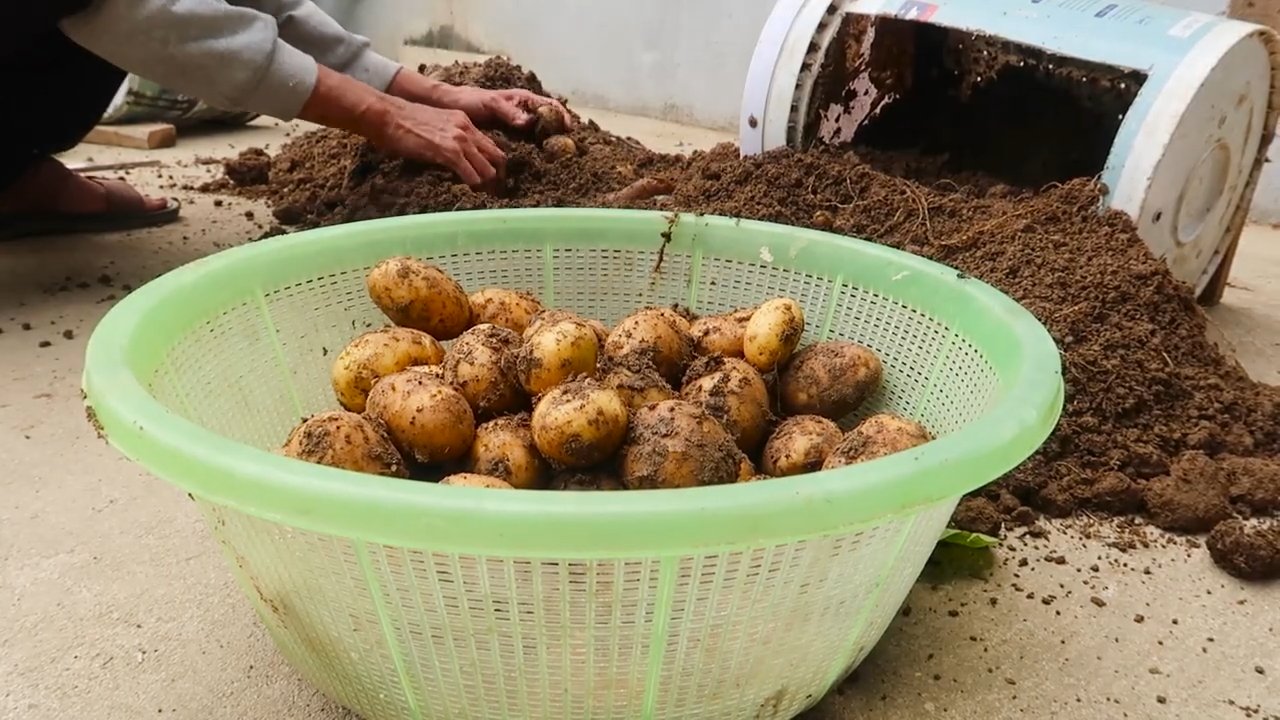
Growing Potatoes in a Bag: A Beginner’s Guide
Hey there, fellow gardening enthusiasts! Ever dreamt of harvesting your own homegrown potatoes, fresh from the earth (or, in this case, a bag)? Well, dream no more! Growing potatoes in a bag is surprisingly easy, even if you don’t have a sprawling garden. It’s a fantastic way to get a good yield in a small space, and it’s super satisfying to watch those little spuds grow. I’ve done this for years, and I’m excited to share my secrets with you. Let’s get started!
What You’ll Need
Before we dive into the nitty-gritty, let’s gather our supplies. Here’s what you’ll need to embark on your potato-growing adventure:
* A Large Grow Bag (or a sturdy garbage bag): Aim for at least 15-20 gallons. The bigger, the better, as it gives the potatoes more room to grow. Make sure it has drainage holes! If you’re using a garbage bag, poke several holes in the bottom.
* Seed Potatoes: These aren’t seeds, but rather potatoes specifically grown for planting. You can find them at your local garden center or online. Choose a variety you love to eat!
* Potting Mix: A good quality potting mix is crucial. Avoid using garden soil, as it can be too heavy and compact.
* Compost (Optional but Recommended): Adding compost enriches the soil and provides extra nutrients for your potatoes.
* Fertilizer (Optional): A balanced fertilizer, like a 10-10-10, can give your potatoes a boost.
* Watering Can or Hose: For keeping your potatoes hydrated.
* Gardening Gloves: To keep your hands clean and protected.
* A Sunny Spot: Potatoes need at least 6-8 hours of sunlight per day.
Preparing Your Seed Potatoes
Okay, so you’ve got your supplies. Now, let’s talk about preparing your seed potatoes. This step is important for getting a good head start.
* Chitting (Sprouting): This is the process of encouraging your seed potatoes to sprout before planting. It’s not absolutely necessary, but it can speed up the growing process.
* A few weeks before planting, place your seed potatoes in a cool, bright location (but not direct sunlight). An egg carton works well for this.
* You’ll notice small “eyes” or buds starting to sprout. These are what we want!
* If your seed potatoes are large, you can cut them into smaller pieces, making sure each piece has at least 2-3 eyes. Let the cut pieces dry for a day or two to prevent rotting.
Planting Your Potatoes
Alright, time to get our hands dirty! This is where the magic happens.
1. Prepare the Bag: Roll down the top of your grow bag a few times to make it easier to add soil.
2. Add the Initial Soil Layer: Fill the bottom of the bag with about 4-6 inches of potting mix. Mix in some compost if you’re using it.
3. Plant the Seed Potatoes: Place your seed potatoes (or the cut pieces) on top of the soil, with the sprouts facing upwards. Space them about 8-10 inches apart. If you only have one seed potato, place it in the center.
4. Cover the Potatoes: Cover the seed potatoes with another 4-6 inches of potting mix.
5. Water Thoroughly: Water the soil until it’s moist but not soggy.
The “Hilling” Process: Encouraging More Potatoes
This is the key to getting a bountiful harvest! “Hilling” is the process of adding more soil to the bag as the potato plants grow. This encourages the plant to produce more potatoes along the buried stem.
1. Wait for Growth: As the potato plants grow, they’ll start to emerge from the soil.
2. Add More Soil: When the plants are about 6-8 inches tall, add another layer of potting mix, covering the stems up to the bottom set of leaves.
3. Repeat the Process: Continue adding soil every few weeks as the plants grow taller, always covering the stems. This encourages more potato production along the buried stem.
4. Water Regularly: Keep the soil consistently moist, but avoid overwatering. Potatoes don’t like to sit in soggy soil.
Caring for Your Potato Plants
Now that your potatoes are planted and growing, it’s important to provide them with the care they need to thrive.
* Sunlight: Make sure your potato plants are getting at least 6-8 hours of sunlight per day.
* Watering: Water regularly, especially during dry spells. Check the soil moisture by sticking your finger into the soil. If it feels dry an inch or two down, it’s time to water.
* Fertilizing (Optional): If you’re using fertilizer, apply it according to the package directions. Avoid over-fertilizing, as this can lead to excessive foliage growth and fewer potatoes.
* Pest Control: Keep an eye out for pests like aphids, potato beetles, and flea beetles. If you spot any, you can try hand-picking them off or using an organic insecticide.
* Disease Prevention: Potatoes can be susceptible to diseases like blight. To prevent this, make sure your plants have good air circulation and avoid overhead watering.
Harvesting Your Potatoes
The moment we’ve all been waiting for! Harvesting your homegrown potatoes is incredibly rewarding.
1. When to Harvest: Potatoes are typically ready to harvest about 80-100 days after planting, depending on the variety. You’ll know they’re ready when the foliage starts to turn yellow and die back.
2. Stop Watering: A week or two before harvesting, stop watering the plants. This will help the potatoes to cure and develop a thicker skin.
3. Harvesting Time: Carefully tip the bag over and gently sift through the soil to find your potatoes. You can also reach into the bag and feel around for them.
4. Curing the Potatoes: After harvesting, let the potatoes dry in a cool, dark, and well-ventilated place for a few days. This will help them to develop a thicker skin and prevent rotting.
5. Storing Your Potatoes: Store your cured potatoes in a cool, dark, and dry place, like a root cellar or a basement. Avoid storing them in the refrigerator, as this can cause them to turn sweet.
Troubleshooting
Even with the best care, you might encounter some challenges along the way. Here are a few common problems and how to address them:
* Yellowing Leaves: This could be a sign of overwatering, underwatering, nutrient deficiency, or disease. Check the soil moisture and adjust your watering accordingly. If you suspect a nutrient deficiency, try adding some fertilizer.
* Small Potatoes: This could be due to insufficient sunlight, overcrowding, or lack of nutrients. Make sure your plants are getting enough sunlight and that you’re hilling them properly.
* Pests: As mentioned earlier, keep an eye out for pests and take action as needed.
* Rotting Potatoes: This is usually caused by overwatering or poor drainage. Make sure your bag has drainage holes and avoid overwatering.
Choosing the Right Potato Variety
Selecting the right potato variety is crucial for a successful harvest. Different varieties have different characteristics, such as size, shape, color, and flavor. Here are a few popular choices:
* Yukon Gold: These are known for their buttery flavor and smooth texture. They’re great for boiling, mashing, and roasting.
* Red Potatoes: These have a waxy texture and hold their shape well when cooked. They’re perfect for potato salads and boiling.
* Russet Potatoes: These are the classic baking potatoes. They have a fluffy texture and are also great for frying.
* Fingerling Potatoes: These are small, elongated potatoes with a unique flavor and texture. They’re delicious roasted or steamed.
Tips for Success
Here are a few extra tips to help you grow the best potatoes possible:
* Use a Good Quality Potting Mix: This is essential for providing your potatoes with the nutrients and drainage they need.
* Don’t Overwater: Potatoes don’t like to sit in soggy soil.
* Hill Regularly: This is the key to getting a bountiful harvest.
* Be Patient: Growing potatoes takes time and effort, but the rewards are well worth it.
* Enjoy the Process: Gardening should be fun! Don’t be afraid to experiment and learn along the way.
Growing potatoes in a bag is a rewarding and enjoyable experience. With a little bit of care and attention, you can harvest your own delicious homegrown potatoes, even if
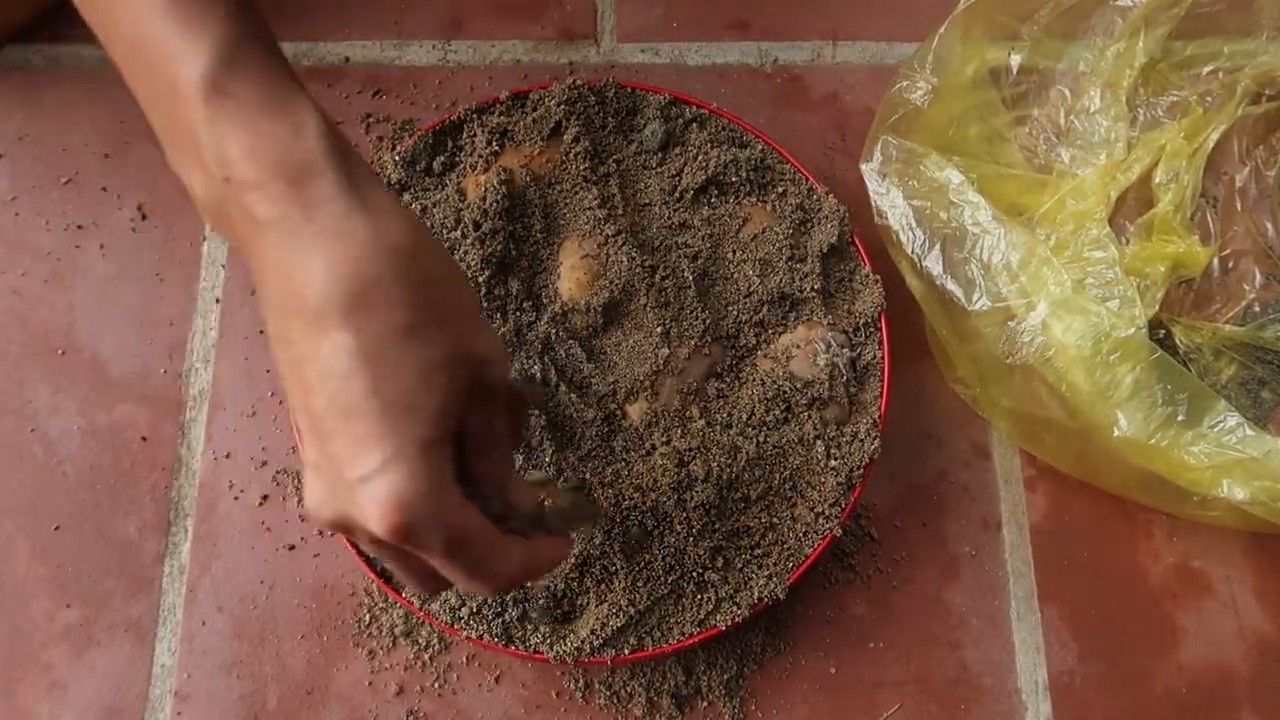
Conclusion
So, there you have it! Growing potatoes at home, even if you only have a small balcony or patio, is not only achievable but incredibly rewarding. Forget those bland, store-bought spuds – imagine the unparalleled flavor of freshly harvested, homegrown potatoes gracing your dinner table. This DIY trick isn’t just about saving money; it’s about connecting with your food, understanding its journey from seed to plate, and experiencing the pure joy of nurturing something from the earth.
Why is this a must-try? Because it’s simpler than you think. You don’t need acres of farmland or a green thumb of mythical proportions. With a few basic supplies, a little patience, and this guide, you can cultivate your own potato patch, no matter your living situation. The satisfaction of digging up your own potatoes, knowing exactly where they came from and how they were grown, is an experience that’s hard to beat.
But the beauty of this DIY potato-growing adventure lies in its adaptability. Feel free to experiment with different potato varieties. Russets are fantastic for baking and frying, while Yukon Golds offer a creamy texture perfect for mashed potatoes. Red potatoes hold their shape well in salads and stews. Try growing a mix to discover your favorites!
Consider adding companion plants to your potato containers. Marigolds can help deter pests, while basil can improve the flavor of your potatoes. You can also adjust the size of your containers to suit your space and needs. A large grow bag is ideal for a bountiful harvest, while a smaller bucket might be perfect for a single plant on a sunny windowsill.
Don’t be afraid to get your hands dirty and embrace the learning process. There will be challenges along the way, but that’s part of the fun. And remember, even a small harvest of homegrown potatoes is a victory worth celebrating.
We wholeheartedly encourage you to try this DIY trick and experience the magic of growing potatoes at home. It’s a fantastic way to connect with nature, enjoy fresh, delicious food, and impress your friends and family with your newfound gardening skills.
Once you’ve embarked on your potato-growing journey, we’d love to hear about your experiences! Share your photos, tips, and triumphs in the comments below. Let’s create a community of home gardeners, all united by our love of homegrown potatoes. What variety did you choose? What challenges did you face? What delicious dishes did you create with your harvest? Your insights can inspire and help others on their own potato-growing adventures. So, get planting, get growing, and get ready to enjoy the incredible taste of homegrown potatoes!
Frequently Asked Questions (FAQ)
What kind of container should I use to grow potatoes?
The ideal container for growing potatoes should be large enough to accommodate the growing root system and allow for hilling. A container with a minimum volume of 10 gallons is generally recommended, but larger is better. Grow bags, plastic bins, and even repurposed trash cans (with drainage holes) can work well. Ensure the container has adequate drainage to prevent waterlogging, which can lead to root rot. The material of the container isn’t as crucial as its size and drainage capabilities.
How often should I water my potato plants?
Watering frequency depends on several factors, including the weather, the size of your container, and the type of soil you’re using. Generally, you should water your potato plants when the top inch of soil feels dry to the touch. Avoid overwatering, as this can lead to fungal diseases. During hot, dry periods, you may need to water daily. A good rule of thumb is to water deeply and less frequently, allowing the soil to dry out slightly between waterings. Monitor your plants closely and adjust your watering schedule accordingly.
What kind of soil is best for growing potatoes?
Potatoes thrive in well-draining, slightly acidic soil with a pH between 6.0 and 6.5. A loamy soil that is rich in organic matter is ideal. You can create a suitable soil mix by combining equal parts of garden soil, compost, and peat moss or coco coir. Avoid heavy clay soils, as they can become waterlogged and hinder root development. Adding perlite or vermiculite to your soil mix can improve drainage and aeration.
How do I “hill” my potato plants?
Hilling is the process of adding more soil around the stems of your potato plants as they grow. This encourages the development of more tubers along the buried stems, resulting in a larger harvest. When the potato plants are about 6 inches tall, add a few inches of soil around the base of the stems, leaving the top leaves exposed. Repeat this process every few weeks as the plants grow, until the container is nearly full.
When is the best time to harvest my potatoes?
The timing of your potato harvest depends on the variety you’re growing and whether you want “new” potatoes or mature potatoes. New potatoes are small, tender, and have thin skins. They can be harvested a few weeks after the plants flower. Mature potatoes are larger, have thicker skins, and can be stored for longer periods. They should be harvested after the foliage has died back and turned brown, typically about 80-100 days after planting. To harvest, gently dig around the base of the plant and lift the potatoes from the soil.
What are some common pests and diseases that affect potato plants?
Common pests that can affect potato plants include aphids, potato beetles, and flea beetles. Diseases include early blight, late blight, and potato scab. To prevent pests and diseases, choose disease-resistant varieties, practice crop rotation, and keep your plants healthy and well-watered. You can also use organic pest control methods, such as insecticidal soap or neem oil, to control infestations.
Can I grow potatoes from store-bought potatoes?
While you can technically grow potatoes from store-bought potatoes, it’s generally not recommended. Store-bought potatoes may have been treated with chemicals to prevent sprouting, and they may also carry diseases. It’s best to use certified seed potatoes, which are specifically grown for planting and are guaranteed to be disease-free.
How do I store my harvested potatoes?
Store your harvested potatoes in a cool, dark, and well-ventilated place. The ideal temperature is between 45 and 50 degrees Fahrenheit. Avoid storing potatoes in the refrigerator, as this can cause them to develop a sweet taste. Store them in a burlap sack or a cardboard box with holes for ventilation. Check your potatoes regularly for signs of spoilage and discard any that are soft or have sprouted.
Can I grow potatoes in a small space, like a balcony?
Absolutely! Growing potatoes in containers is a great option for small spaces like balconies or patios. Choose a large container, use a well-draining soil mix, and provide plenty of sunlight. You can even grow potatoes in grow bags, which are lightweight and easy to move around.
What are some good potato varieties to grow in containers?
Several potato varieties are well-suited for container gardening, including Yukon Gold, Red Norland, and fingerling potatoes. These varieties tend to be more compact and produce a good yield in a smaller space. Experiment with different varieties to find your favorites!

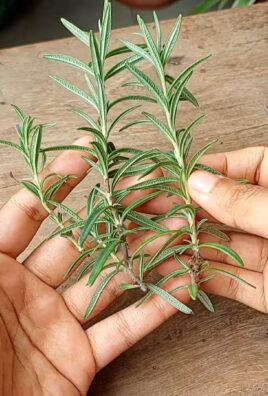
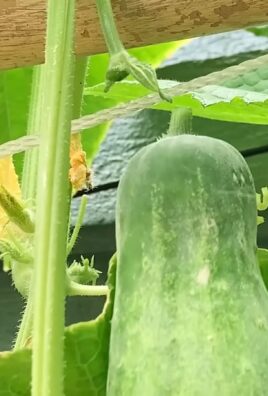
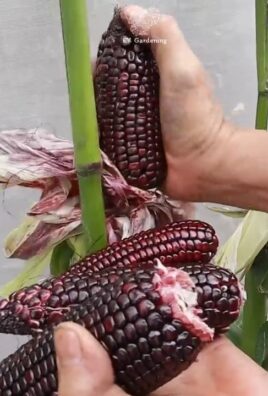
Leave a Comment